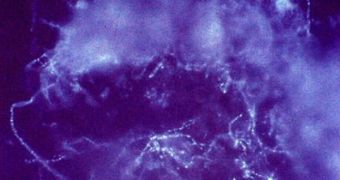Working off the coast of Peru, a team of researchers was a short while ago able to study a population of the microbes that live beneath the Pacific Ocean floor. These microorganisms are the closest thing to asteroid/extinction-proof lifeforms in the world. The microbes live at geological timescales.
The group believes that the ancient microbes it found may account for as much as 10 percent of Earth's living biomass, which means that they may have had, and still have, a determining influence on our planet's natural carbon cycle.
During the research, the interdisciplinary research group collected deep-crust samples from a number of locations off the Peruvian shore. Subsequent analysis of the “catch” showed that most of the microbes alive in these inhospitable areas live on geological timescales.
An important aspect of the effort was to compare the microorganisms living deep below the ocean floor with similar ones living in the water, near the surface. The results could aid us in our quest for finding life on other planets.
“Our first study, back in 2006, made some estimates that the cells could double every 100 to 2,000 years,” explains biochemist Jennifer F. Biddle, PhD.
She is also a former postdoctoral fellow in geosciences at the Pennsylvania State University. “Now we have the first comprehensive look at the genetic makeup of these microbes,” she says.
“The Peruvian Margin is one of the most active surface waters in the world and lots of organic matter is continuously being deposited there,” reveals Christopher H. House, associate professor of geosciences at Penn State.
He is also the director of the Penn State Astrobiology Research Center, and the firector of the Pennsylvania Space Grant Consortium, Daily Galaxy reports.
“The results show that this subsurface environment is the most unique environment yet studied metagenomic approach known today. The world does look very different below the sediment surface,” House explains.
Metagenomics is an approach in which samples of sediments are analyzed in bulk, and are sequenced without separation. This allows experts to discover unknown organisms, and also to establish the approximate composition of the ancient ecosystems they are analyzing.
“In essence, these microbes are almost, practically dead by our normal standards. They metabolize a little, but not much. We do not expect the microbes in other places to be these microbes exactly. But, they could be living at a similar slow rate,” he concludes.
Possible places where such lifeforms could exist include Martian aquifers, the hydrothermal vents beneath the ices covering the Jovian moon Europa, or beneath the thick crust covering Enceladus, Saturn's icy moon.

 14 DAY TRIAL //
14 DAY TRIAL //